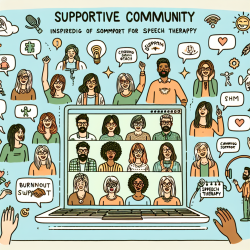Introduction
In the realm of speech-language pathology, understanding the diverse profiles of adolescents' physical activity can be instrumental in tailoring therapeutic interventions. The recent study titled Identification of distinct physical activity profiles through adolescence: a longitudinal qualitative description study provides valuable insights into how adolescents engage with physical activities over time. By identifying four distinct profiles—Independents, Multitaskers, Specialists, and Undecided—this research offers a framework that can be leveraged by practitioners to enhance therapeutic outcomes for children.
Understanding the Profiles
The study categorizes adolescents into four profiles based on their engagement with physical activities:
- Independents: These adolescents seek autonomy and prefer non-competitive, individual activities that offer freedom.
- Multitaskers: Engaging in multiple sports, these individuals value physical activity as a core part of their identity and enjoy the social connections it fosters.
- Specialists: Focused on excelling in one sport, these adolescents are driven by competition and personal achievement.
- Undecided: Participating in physical activities primarily to fill time, these individuals are less committed and more influenced by external opportunities.
Implications for Speech-Language Pathology
Understanding these profiles can significantly inform therapeutic practices in speech-language pathology, particularly in online therapy settings like those provided by TinyEYE. Here’s how:
- Customized Interventions: Tailoring interventions to align with a child's physical activity profile can enhance engagement and motivation. For example, incorporating elements of autonomy for Independents or social interaction for Multitaskers can make therapy more appealing.
- Enhancing Motivation: Recognizing the motivational drivers for each profile—such as competition for Specialists or social connections for Multitaskers—can help practitioners design activities that resonate more deeply with each child.
- Addressing Barriers: By understanding the barriers each profile faces, practitioners can develop strategies to overcome these obstacles, such as providing additional support for Undecided individuals who may lack intrinsic motivation.
Encouraging Further Research
The study also highlights the need for ongoing research into how these profiles can be further refined and applied in therapeutic contexts. Practitioners are encouraged to consider how these insights can be integrated into their practice and to contribute to the growing body of research in this area.
Conclusion
By leveraging the insights from this research, speech-language pathologists can create more effective, personalized interventions that not only improve therapeutic outcomes but also foster a lifelong engagement with physical activity. To read the original research paper, please follow this link: Identification of distinct physical activity profiles through adolescence: a longitudinal qualitative description study.










